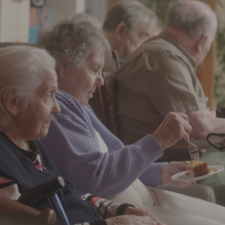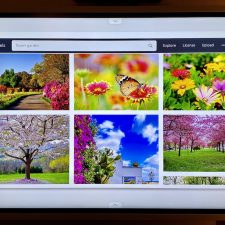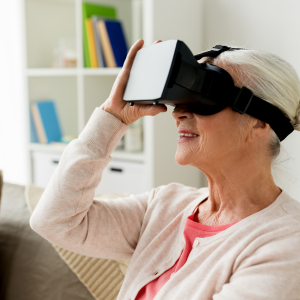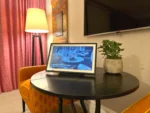Students Embrace Samsung Technology with Art
In Conjunction with Samsung UK and three British Schools, The Digital Line are pleased to see that the Flip Art digital art competition is well underway.
Not only do we have the pleasure of viewing some wonderfully creative art images, but we have also reached the imagination of hundreds of students keen to try this new digital technology.
The Samsung Flip 2 board is an interactive, touchscreen digital display that can mimic the creativity of an artist’s brush. When using the brush mode, the Samsung Flip 2 recognises a wide range of thicknesses, so you can create art at the stroke of a brush. Water and oil painting modes allow different styles and textures, while Flip 2 also gives you a full, vibrant colour palette, even allowing for flexible colour mixing.
After the initial hub of excitement created from the arrival of the screen, Felicity Sanders, teacher of art and design at Cranmore School gave us an insight into the thoughts and feeling of the possibilities available when producing art with the Samsung Flip 2 Digital Screen.
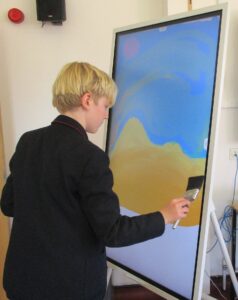
Are the students at Cranmore School open to new ideas when it comes to creating art?
“The boys at Cranmore are already embracing the opportunity to create on a larger scale and to produce this work digitally. They have been interested to try out different approaches that I have set for them and are learning how to use the functions in the screen, such as the import feature.
Our students wholeheartedly embrace new ideas and are often open to all challenges set before them. This is a culture we are fostering on a daily basis.”
What were their initial thoughts about the digital board?
“A resounding “Cool” can be heard from class to class, year group to year group! Students who are familiar with digital drawing platforms are fascinated to learn how Flip2 compares with functions they are used to. Some students were nervous to work on a larger scale, and unsure where or how to start. It has been amusing to hear students comment on the unusual nature of using their familiar brushes for painting, onto the digital screen, and how it felt almost ‘naughty’ to break these conventional rules.”
Did their opinions change once they had started using the equipment?
“Having a range of brushes available to them made the prospect of scale easier to work with.
One student picked up a large brush that one might use to paint a wall and swiftly covered the screen with a dark grey tone to set a base. He proceeded to undertake the creation of his picture with this brush. Students are wowed by the brush feature with one student commenting on the ‘intuitive nature of the brush’ how it ‘naturally picks up the pressure you apply to the board to change the weight of your line’. I hear ‘it’s so clever’ many times! Students naturally drew larger without daring to think about the big scale.”
How easy was it for them to learn how to use flip 2? Are they using it for anything else?
“Incredibly easy; the only limit is their imagination! We feel we are only beginning to scratch the surface of what is possible on this screen. We are beginning to push the opportunity to import drawings and paintings they have created on paper and enhancing them on the screen. We have mostly been focusing on the creation of ‘paintings’ rather than the graphic or presentation features.”
Is there any particular style they prefer to use i.e., large/small brush – water/oil paint styles?
“All students have reached straight for the brush mode and enjoy the oil paint function. Learning to blend colours has come naturally to some students, keeping the paint ‘wet’ to emulate the process of creating a painting as you might with real paints. The sensitivity of the screen means it feels almost as close to real painting as you can get, with the intuitive blending of colours supporting this.”
As a teacher what are your thoughts?
“It is exciting to have this new equipment to turn convention on its head! I love the brush feature as a painter myself. I have enjoyed seeing the students standing up to create as opposed to the norms of being seated, and hearing the joy in students’ voices, keen to ‘have a play’ with the exciting equipment. I think there are still improvements that would allow the board to go further such as the option to create layers as you might in a vector or pixel-based drawing program or include some of the familiar tools from these programs such as ‘shapes’ and easier selection tools to be able to copy more specific sections of one’s painting. I love how the board is helping to bridge the gap between reliance on digitalisation and the confidence to create with one’s own hands.”
Tags: Cranmore School, Digital Art, Samsung Flip 2

 Share On Facebook
Share On Facebook Tweet It
Tweet It

